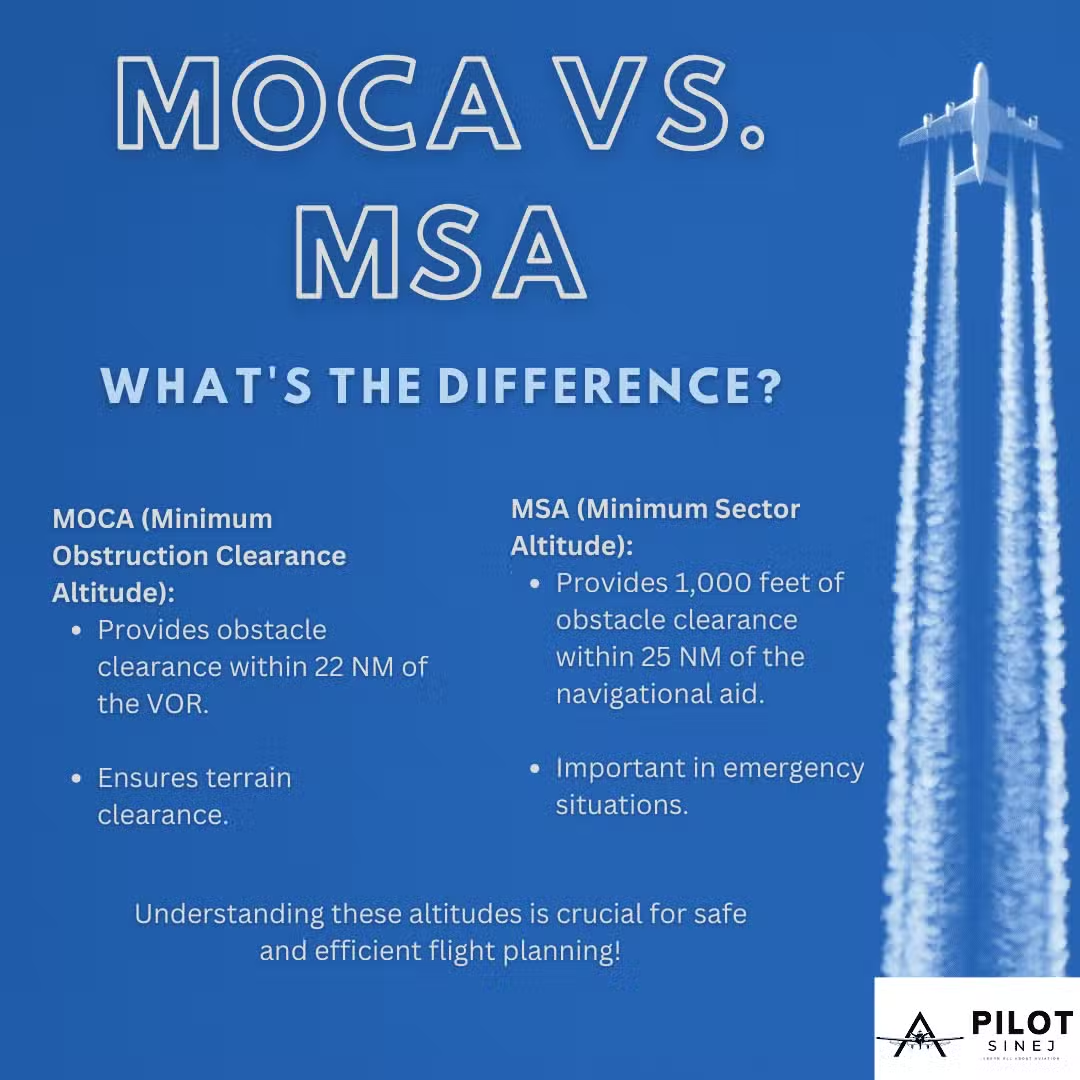MOCA (Minimum Obstruction Clearance Altitude):
- Provides obstacle clearance within 22 NM of the VOR.
- Ensures terrain clearance but may not guarantee radio signal reception.
MSA (Minimum Sector Altitude):
-
- Provides 1,000 feet of obstacle clearance within 25 NM of the navigational aid.
- Used for emergency situations and doesn’t guarantee navigation or communication coverage.
Understanding these altitudes is crucial for safe and efficient flight planning!

People also Ask
What is the difference between MOCA and MSA?
- MOCA (Minimum Obstruction Clearance Altitude) is the lowest published altitude between navigational fixes on an airway that meets obstacle clearance requirements and ensures adequate VOR signal coverage (within 22 NM of the VOR).
- MSA (Minimum Safe Altitude or Minimum Sector Altitude) typically appears on approach charts and provides at least 1,000 feet of obstacle clearance within a specified radius (usually 25 NM) from a navigation facility or airport reference point.
- Key Difference: MOCA is used en route for obstacle clearance and radio reception, while MSA is used mainly in the terminal area to provide obstacle clearance around an airport or navaid during approach procedures.
What does MOCA mean in Aviation?
MOCA stands for Minimum Obstruction Clearance Altitude. It is the lowest published altitude between navigational waypoints on an IFR airway that guarantees two things: (1) clearance from obstacles, and (2) navigation signal coverage (typically up to 22 nautical miles from the navigational aid).
What is MSA in Aviation?
MSA stands for Minimum Safe Altitude or Minimum Sector Altitude. It is published on instrument approach charts and guarantees at least 1,000 feet of obstacle clearance within a designated radius—often 25 nautical miles—centered on a navigation facility or the airport’s geographic reference point.
MOCA vs. MSA Short Video Presentation
Please rate this post
